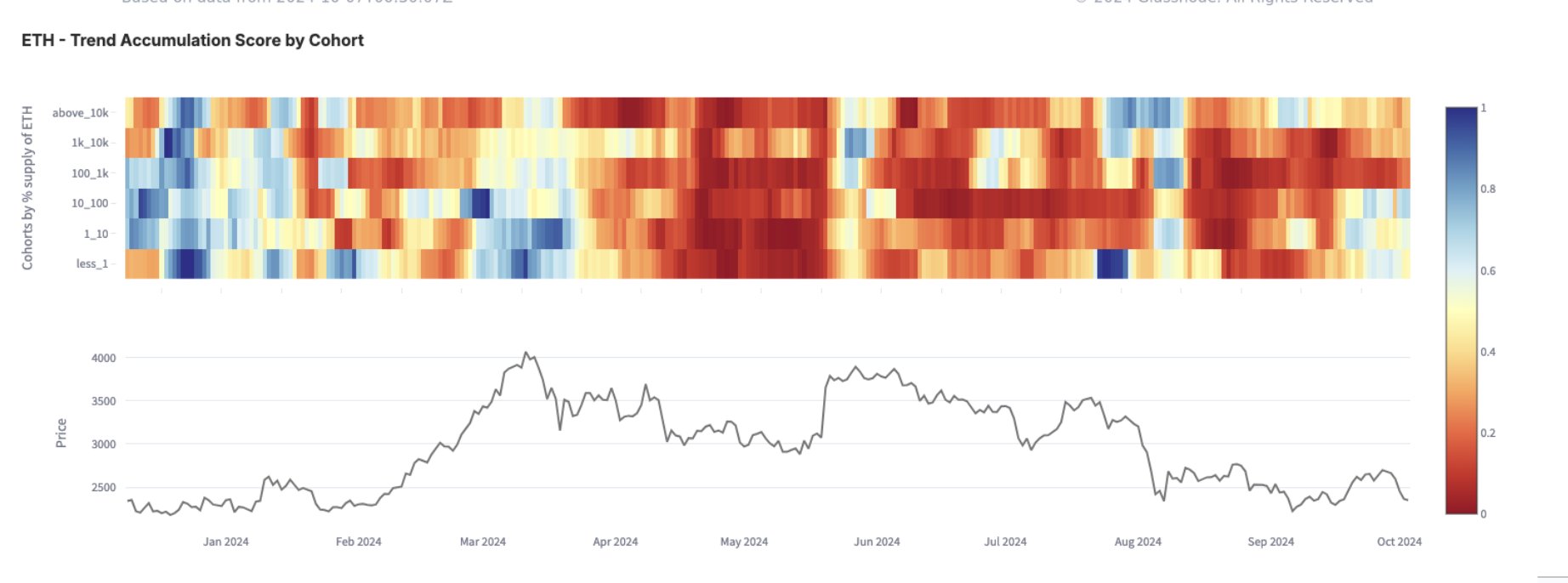On-chain data shows that Ethereum whales have participated in a steady distribution over the past six months, a sign that is not ideal for ETH.
Ethereum Accumulation Trend Score Turned Red Across Cohorts
As Analyst James Van Straten pointed out in a new article on X that the accumulation trend score has recently shown a gloomy picture for Ethereum. The “Accumulation Trend Score” here refers to an indicator from Glassnode that tells us whether investors in a given asset are accumulating or not.
This measure takes into account not only the net balance changes that occur in investors’ portfolios, but also the size of the entities. This means that larger entities have a higher weight in the indicator. When the score value is close to 1, it means either that large investors are participating in heavy accumulation or that a large number of small holders are buying. On the other hand, being close to 0 implies that a net distribution is occurring in the network or at least, that there is a lack of accumulation.
In the context of the current topic, the version of the accumulation trend score that interests us is that of individual cohorts. The addresses have been divided into these groups based on the balance they carry.
Now here is a chart that shows the trend of Ethereum’s accumulation trend score for different cohorts over the past year:
The value of the metric appears to have been red for most of the cohorts recently | Source: @btcjvs on X
As seen in the chart above, the Ethereum trend accumulation score showed a shade of blue in the cohorts at the start of the year, implying that investors as a whole were participating in some degree of accumulation .
However, shortly after Bitcoin’s (ATH) all-time high in March, investors began selling aggressively, with the indicator’s value taking on a dark red color (i.e. very close to zero). Since the initial strong distribution, sales have calmed in recent months, but the metric is still trending toward the red. It should be noted that the 100-1,000 BTC, 1,000-10,000 BTC, and 10,000+ BTC groups are still in the distribution phase.
These cohorts are commonly called, in the same order, sharks, whales and mega-whales. Investors of this size can exert some influence on the market, so their participation in consistent sell-offs over the last six months or so is naturally not a good sign for Ethereum.
It is possible that until the various cohorts return to accumulation mode, ETH will not be able to achieve a significant recovery.
ETH Price
At the time of writing, Ethereum is floating around $2,400, down more than 7% over the past seven days.
Looks like the price of the coin has been moving sideways over the last few days | Source: ETHUSDT on TradingView
Featured image of Dall-E, Glassnode.com, chart from TradingView.com





